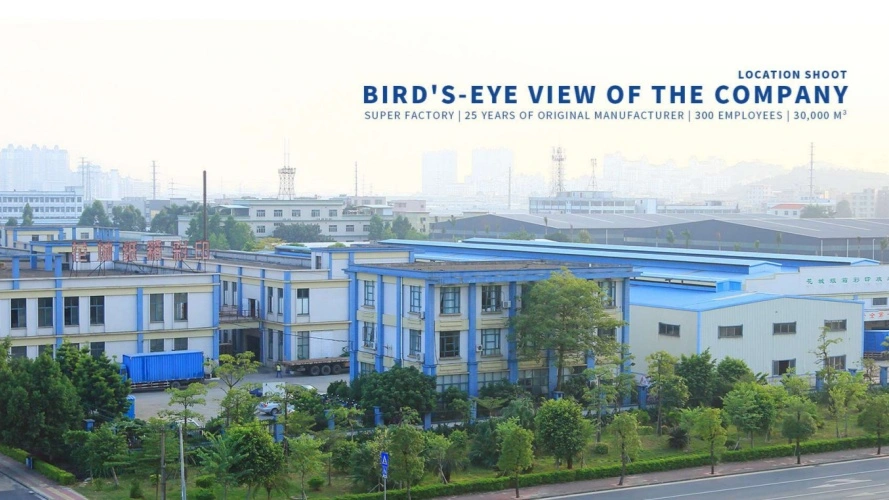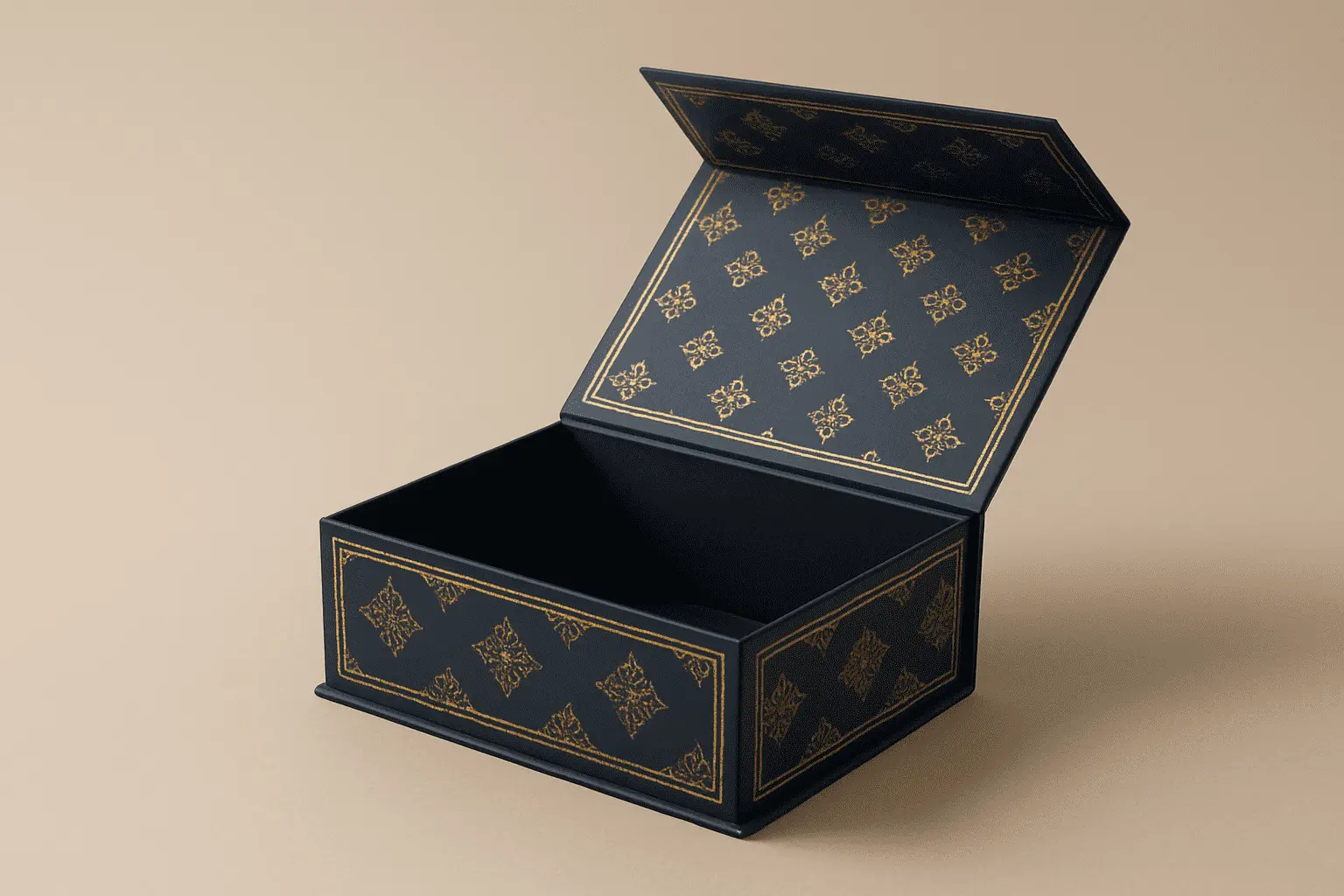The Ultimate Guide to Choosing the Right Paper Shopping Bag
Picture this: you're standing in your store, watching customers struggle with flimsy plastic bags that tear before they reach the exit, or worse yet, seeing your brand's reputation diminished by poor-quality packaging that doesn't reflect your business values. Choosing the right Paper Shopping Bag isn't just about carrying products from point A to point B—it's about creating a lasting impression that speaks to your brand's commitment to quality, sustainability, and customer experience. This comprehensive guide will walk you through every critical factor you need to consider when selecting Paper Shopping Bags, from material specifications and handle options to printing techniques and environmental impact, ensuring you make informed decisions that align with your business goals and customer expectations.

Understanding Paper Shopping Bag Materials and Quality Standards
The foundation of any exceptional Paper Shopping Bag lies in its material composition and construction quality. When selecting materials for your Paper Shopping Bag projects, understanding the differences between various paper types can significantly impact both functionality and brand perception. Premium paper stocks like SBS C1S (Solid Bleached Sulfate – Coated One Side) offer exceptional printing surfaces with bright white appearances produced from fully bleached fibers, making them ideal for high-end retail applications where visual impact matters most. This material provides excellent structural integrity while maintaining compatibility with specialty finishing processes like foil stamping, embossing, and spot UV applications.
SBS C2S (Solid Bleached Sulfate, Coated Two Sides) represents the pinnacle of Paper Shopping Bag materials, featuring smooth, high-gloss surfaces on both sides that ensure superior print quality and vibrant color reproduction. Made entirely from virgin bleached pulp, this material offers exceptional cleanliness and hygiene standards, making it perfect for food service applications and luxury retail environments. Your paper bags are an extension of your brand, so the design and printing options are vital. Look for paper that accommodates high-quality printing and vibrant colors. The dual-sided coating enables professional print output on both interior and exterior surfaces, providing maximum flexibility for branding opportunities.
-
Cost-Effective Alternatives: CCNB and Kraft Options
For businesses seeking economical solutions without compromising on quality, CCNB (Clay Coated News Back) provides an excellent balance between cost-effectiveness and performance. This recycled fiber paperboard features a white clay-coated front surface for high-quality printing while maintaining structural strength through its grey uncoated backing. The high recycled content supports sustainability initiatives while offering reliable print performance compatible with both offset and flexographic printing processes, making it an ideal choice for Paper Shopping Bag applications in food packaging, electronics, and cosmetics industries.
Brown Kraft paper represents the most environmentally conscious option for Paper Shopping Bag manufacturing, made from unbleached wood pulp that retains its natural brown hue and authentic texture. With high tensile strength, tear resistance, and moisture resistance capabilities, Kraft paper aligns perfectly with sustainable packaging goals while providing cost-effective solutions for high-volume production runs. The natural, earthy appearance makes it particularly suitable for organic, handcrafted, or vintage-style brands seeking to communicate their environmental values through packaging choices.
Paper Shopping Bag Handle Selection and Functionality
The handle system of your Paper Shopping Bag significantly impacts both user experience and brand perception, making careful selection crucial for customer satisfaction and repeat usage. Twisted paper handles offer an excellent combination of sustainability and functionality, crafted by tightly twisting kraft or recycled paper strands into rope-like formations that provide high load capacity while remaining fully recyclable alongside the bag body. These handles distribute weight evenly, preventing pull-through failures while offering color customization options to match any brand palette, making them ideal for businesses prioritizing environmental responsibility without sacrificing functionality.
Cotton rope handles elevate Paper Shopping Bag designs to premium levels through their superior comfort and durability characteristics. Made from braided 100% cotton yarn, these handles provide exceptional comfort during extended carrying periods while maintaining high load capacity through even tension distribution. The natural textile appearance enhances perceived value and quality, making cotton handles particularly suitable for luxury retail applications, gift packaging, and high-end product presentations where customer experience justifies the additional investment.
-
Premium Handle Options for Luxury Applications
Satin ribbon handles transform ordinary Paper Shopping Bags into luxurious packaging solutions through their silky surface texture and elegant draping characteristics. The lustrous finish instantly elevates packaging to high-end levels while providing comfortable grip properties and versatile styling options for decorative accents. These handles resist wear and maintain vibrant colors through extended handling, making them perfect for special occasions, gift packaging, and premium retail environments where visual impact drives purchasing decisions.
Die-cut handles represent the most cost-effective and environmentally friendly option for Paper Shopping Bag designs, created by cutting handle shapes directly into the bag's top panel. This integrated approach eliminates additional materials while maintaining structural integrity and providing clean, modern aesthetics that emphasize branding and graphics. The streamlined appearance works particularly well for minimalist designs and applications where simplicity and functionality take precedence over decorative elements.
Printing Technologies and Color Management for Paper Shopping Bags
Professional printing capabilities can transform basic Paper Shopping Bags into powerful marketing tools that reinforce brand identity and attract customer attention. CMYK printing processes utilize cyan, magenta, yellow, and black inks to reproduce nearly the full spectrum of visible colors through cost-efficient, technically mature methods that accurately reproduce photo-quality images and smooth color gradients. This versatile approach proves ideal for full-color designs, product photography, and complex graphics while offering fast turnaround times and efficiency for large-volume Paper Shopping Bag production runs.
Pantone color matching systems ensure precise brand color reproduction across all Paper Shopping Bag applications through standardized ink formulas identified by unique codes. This system delivers solid, dot-free colors in single passes while guaranteeing consistent brand recognition across different production runs and applications. Selecting the right paper bag involves more than just picking a size. It's about understanding the nuances of dimensions, the significance of GSM, the potential for customisation, and the importance of aesthetics. Essential for maintaining corporate identity standards, Pantone systems can be combined with CMYK processes or other spot colors to create sophisticated effects and textures that enhance Paper Shopping Bag visual appeal.
-
Advanced Finishing Techniques
Surface finishing processes significantly enhance Paper Shopping Bag visual impact and durability through specialized coating applications. UV coatings provide high-gloss, protective surfaces that resist scuffing and moisture while enhancing color vibrancy and overall perceived quality. Matte finishes offer sophisticated, understated elegance that appeals to premium market segments while providing excellent tactile experiences that encourage customer interaction and retention.
Hot foil stamping and embossing techniques add dimensional elements to Paper Shopping Bag designs that create memorable tactile experiences and premium perceptions. These processes work particularly well with metallic paper substrates that already provide reflective finishes, creating layered visual effects that command attention in retail environments. Cold foil applications offer similar visual impact with greater cost efficiency for larger production runs while maintaining compatibility with subsequent printing processes.
Environmental Considerations and Sustainability Factors
Modern Paper Shopping Bag selection increasingly involves environmental impact assessments that balance functionality requirements with sustainability goals. FSC (Forest Stewardship Council) certified materials ensure responsible forest management practices while providing recyclable and biodegradable packaging solutions that align with corporate social responsibility initiatives. These certifications demonstrate commitment to environmental stewardship while meeting increasingly stringent regulatory requirements and consumer expectations for sustainable packaging practices.
The environmental advantages of Paper Shopping Bags over plastic alternatives extend beyond immediate disposal considerations to include reduced petroleum dependency, lower carbon footprints during production, and enhanced biodegradability in various environmental conditions. Durability is a critical component when selecting kraft paper bags. Look for bags consisting of high-quality kraft paper that can withstand the wear and tear of carrying various products. However, durability remains crucial for ensuring single bags can handle multiple uses, reducing overall consumption while maintaining customer satisfaction through reliable performance.
-
Balancing Sustainability with Performance
Advanced lamination and coating technologies enable Paper Shopping Bag designs that combine environmental responsibility with enhanced durability and moisture resistance. Water-based coatings provide protective barriers without compromising recyclability, while bio-based lamination materials offer additional strength without introducing non-biodegradable components. These innovations allow businesses to meet both environmental goals and functional requirements without forcing compromise between sustainability and performance.
The production process itself contributes to overall environmental impact through energy consumption, waste generation, and transportation requirements. Selecting manufacturers with comprehensive environmental management systems, renewable energy usage, and waste reduction programs can significantly reduce the carbon footprint of Paper Shopping Bag procurement while supporting suppliers committed to sustainable business practices.
Sizing Standards and Customization Options
Paper Shopping Bag dimensions must align carefully with product requirements and customer usage patterns to ensure optimal functionality and cost efficiency. There's no single standard, but commonly used paper shopping bag sizes include: Small: 6.5″ × 6.5″ ×3″ Medium: 8″ × 10″ × 4″ Large: 16″ × 12″ × 5″ The standard size of a paper bag often depends on the product and usage. Understanding these standard dimensions helps businesses select appropriate sizes while considering customization options that better serve specific product categories or brand positioning strategies.
The grammage and thickness of the paper material have a huge impact on the bag's endurance. Paper weight specifications measured in GSM (grams per square meter) directly impact both structural integrity and production costs, requiring careful balance between functionality requirements and budget constraints. Heavier papers provide enhanced durability and premium feel while lighter weights offer cost advantages for applications where maximum strength isn't essential.
-
Production Process Integration
The complete Paper Shopping Bag production process involves multiple stages from initial printing through final assembly and quality control. Professional printing transfers designs onto paper substrates using offset, digital, or flexographic processes, followed by surface finishing applications that enhance protection and visual appeal. Lamination processes bond printed sheets to sturdier substrates or apply protective films for enhanced durability, while die-cutting operations create precise shapes, windows, and edge treatments.
Assembly operations involve folding and gluing die-cut pieces together to form finished Paper Shopping Bags, followed by handle attachment and quality inspection procedures. Professional packing and shipping processes ensure products arrive in perfect condition while minimizing transportation impacts through efficient packaging and logistics coordination. Understanding this complete process helps businesses make informed decisions about lead times, quality expectations, and cost structures for Paper Shopping Bag procurement.
Conclusion
Selecting the right Paper Shopping Bag requires careful consideration of materials, handles, printing options, environmental factors, and sizing requirements. By understanding these key elements and their interactions, businesses can make informed decisions that enhance brand image, meet sustainability goals, and provide exceptional customer experiences that drive long-term success.
Cooperate with GUANGZHOU FETCHING COLOR PRINTING & PACKAGING LTD.
Partner with GUANGZHOU FETCHING COLOR PRINTING & PACKAGING LTD., your trusted China Paper Shopping Bag factory with over 25 years of experience since 1999. As a leading China Paper Shopping Bag manufacturer and China Paper Shopping Bag supplier, we operate a 50,000㎡ facility with 300+ skilled employees and advanced machinery including KBA106 UV printing systems and Heidelberg XL162-6L presses. Our comprehensive certifications (ISO14001-2015, ISO9001-2015, FSC, Disney) ensure High Quality Paper Shopping Bags at competitive Paper Shopping Bag prices. Contact us for Paper Shopping Bag wholesale solutions and Paper Shopping Bag for sale inquiries at public@fetchingprinting.com. Your success is our success.
FAQ
Q: What paper weight is best for Paper Shopping Bags?
A: For most retail applications, 200-300 GSM provides optimal balance between durability and cost-effectiveness, while luxury applications may require 350+ GSM for premium feel.
Q: How do I choose between different handle types for Paper Shopping Bags?
A: Consider load capacity, comfort requirements, and brand positioning—twisted paper for eco-friendly applications, cotton rope for premium feel, satin ribbon for luxury packaging.
Q: What's the difference between CMYK and Pantone printing for Paper Shopping Bags?
A: CMYK offers cost-effective full-color reproduction, while Pantone ensures exact brand color matching—many projects combine both for optimal results and cost efficiency.
Q: Are Paper Shopping Bags environmentally friendly compared to plastic?
A: Yes, Paper Shopping Bags are biodegradable, recyclable, and made from renewable resources, offering significant environmental advantages over petroleum-based plastic alternatives.
References
1. Smith, J.A. "Sustainable Packaging Materials in Modern Retail Applications" - Journal of Packaging Technology, 2024
2. Chen, L.M. "Comparative Analysis of Shopping Bag Materials and Environmental Impact" - Environmental Packaging Research, 2023
3. Thompson, R.K. "Print Quality Optimization for Paper-Based Packaging Solutions" - Industrial Printing Quarterly, 2024
4. Davis, M.H. "Consumer Behavior and Packaging Material Preferences in Retail Environments" - Marketing and Packaging Studies, 2023

Based on your location and order quantity, you will have the opportunity to receive a limited time free shipping promotion!

Corporate Purpose
